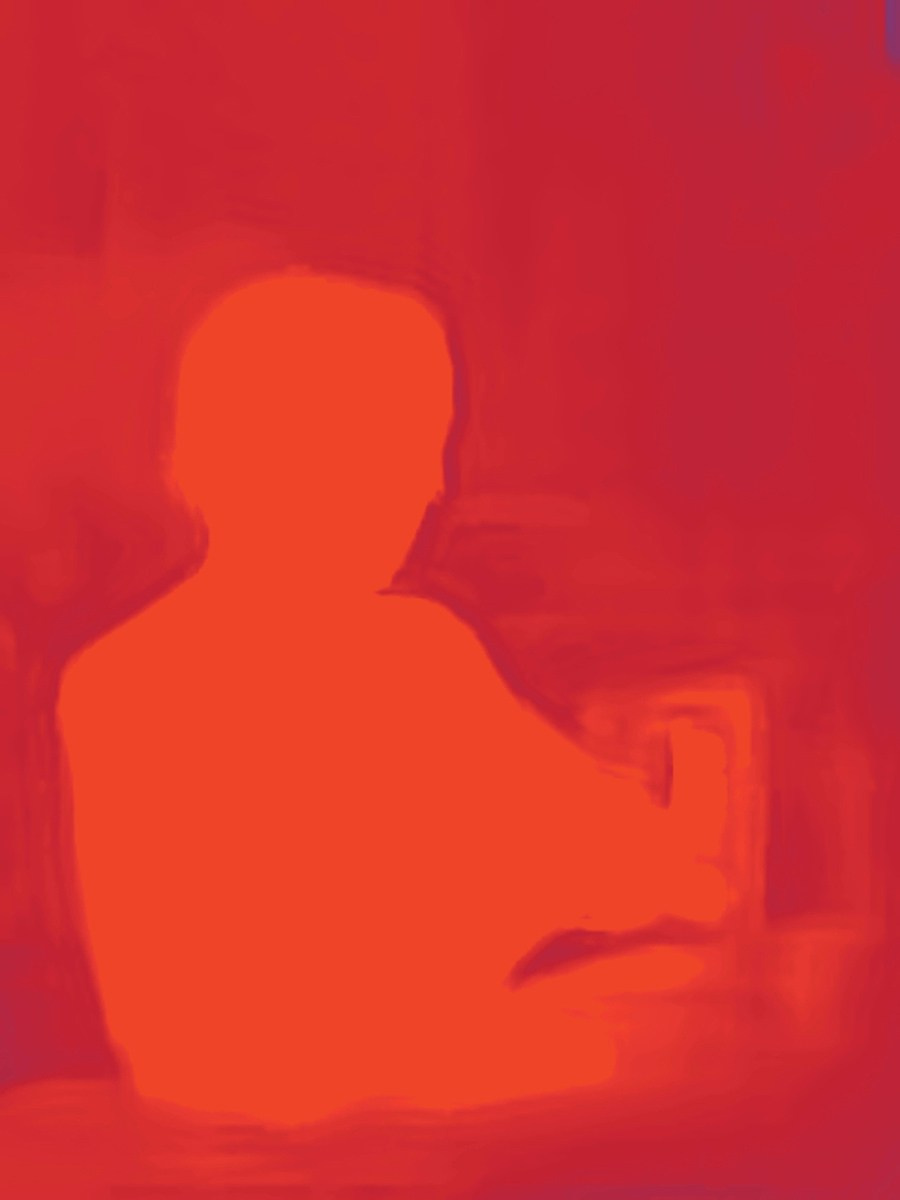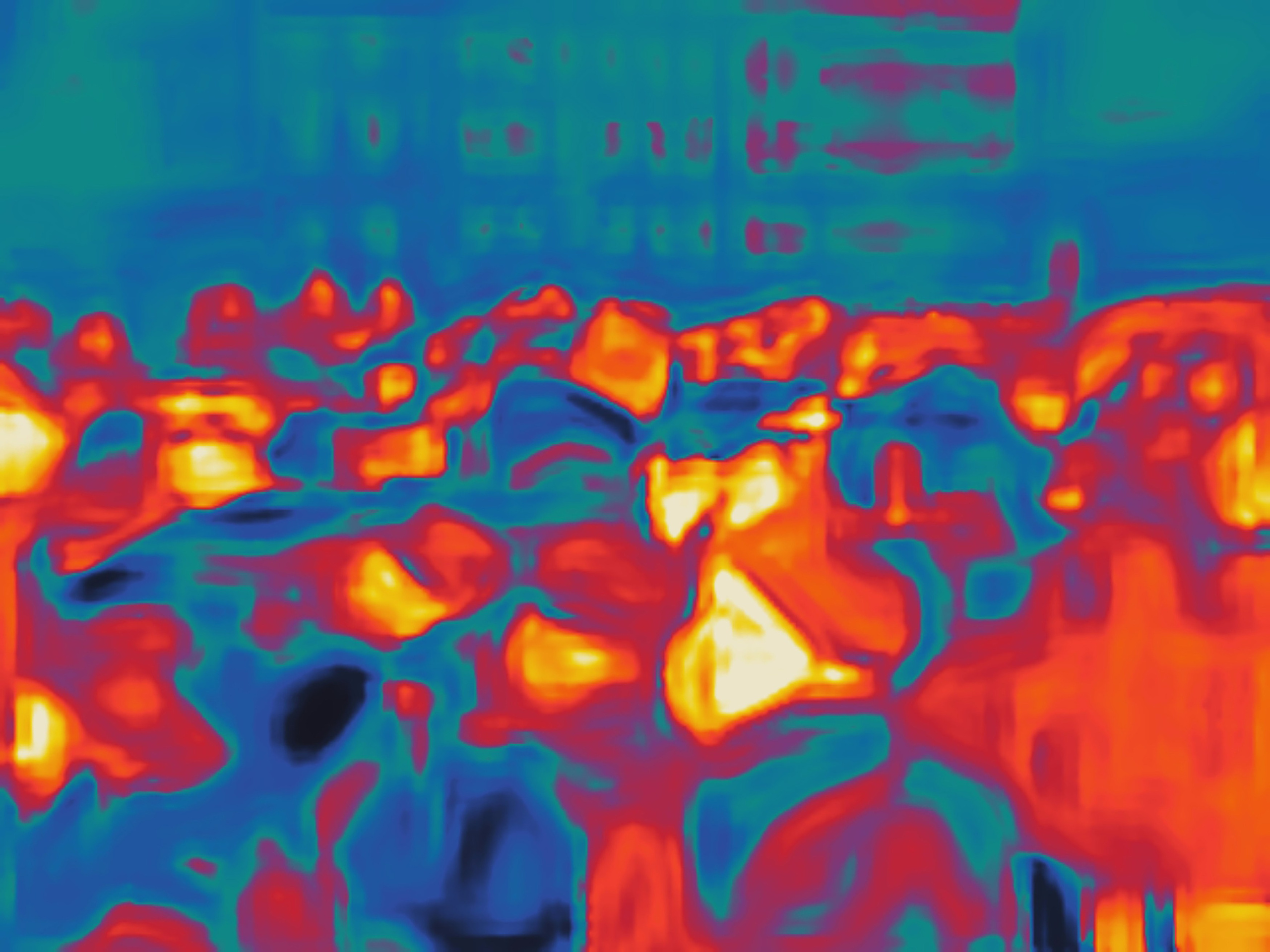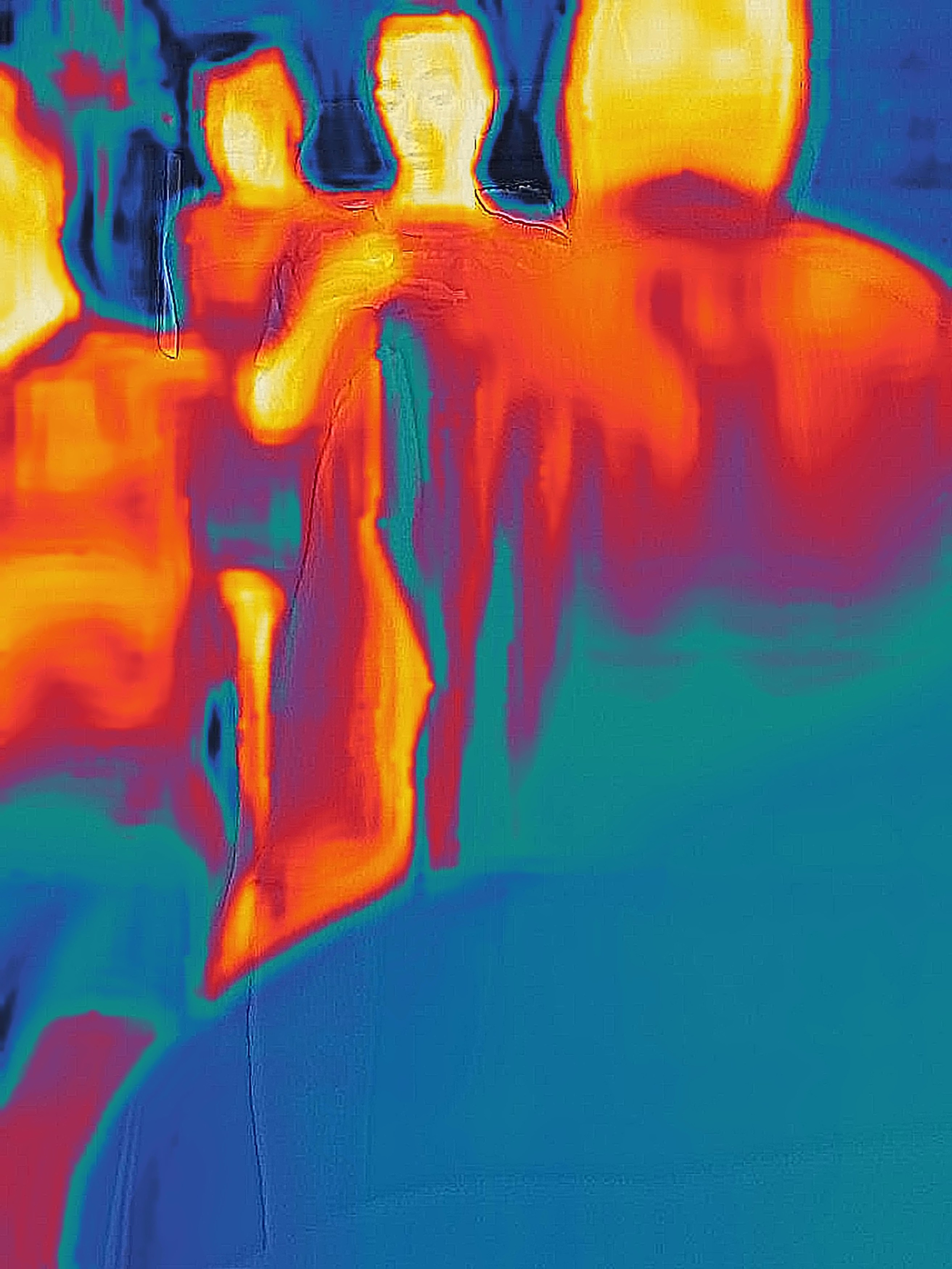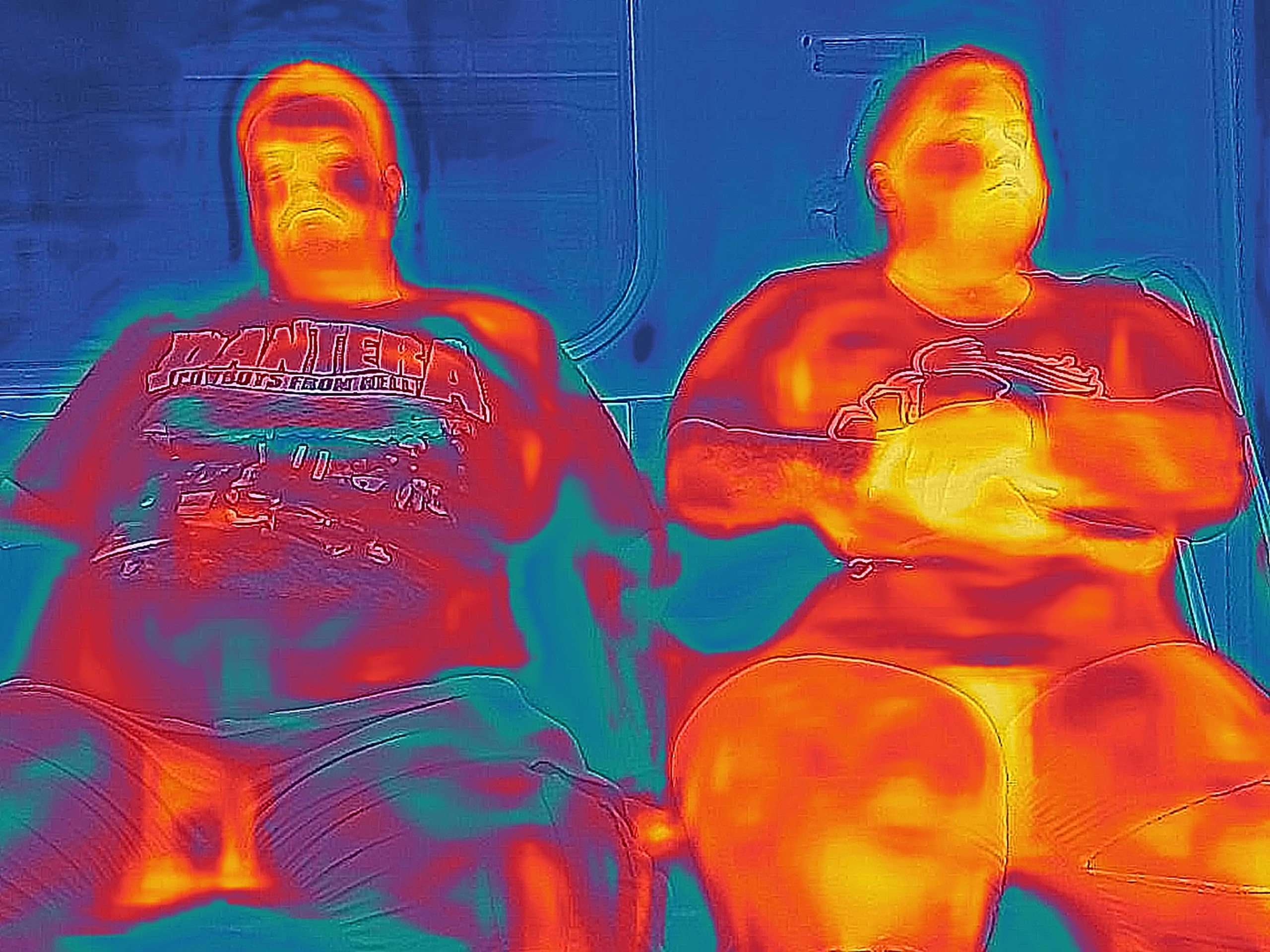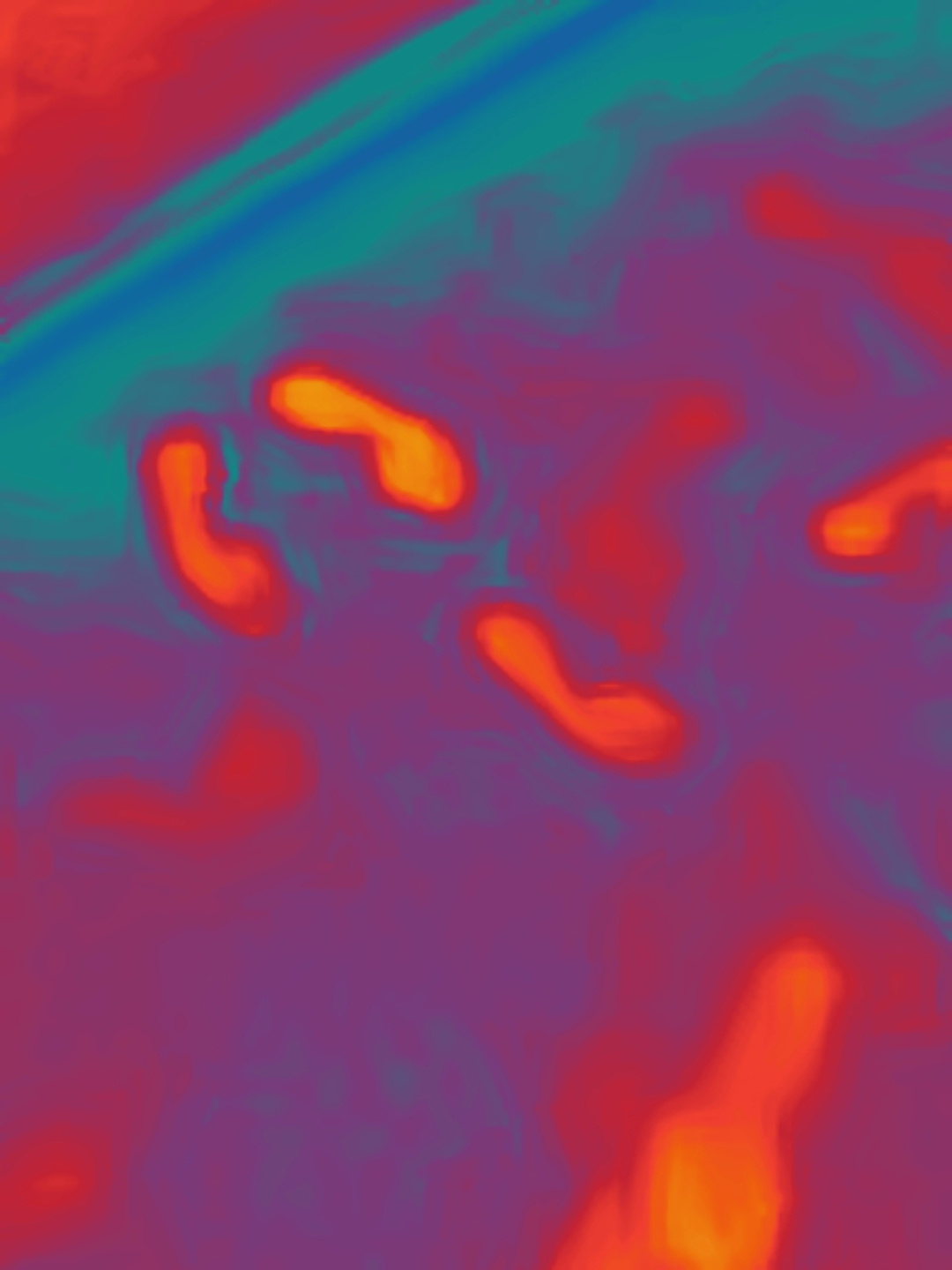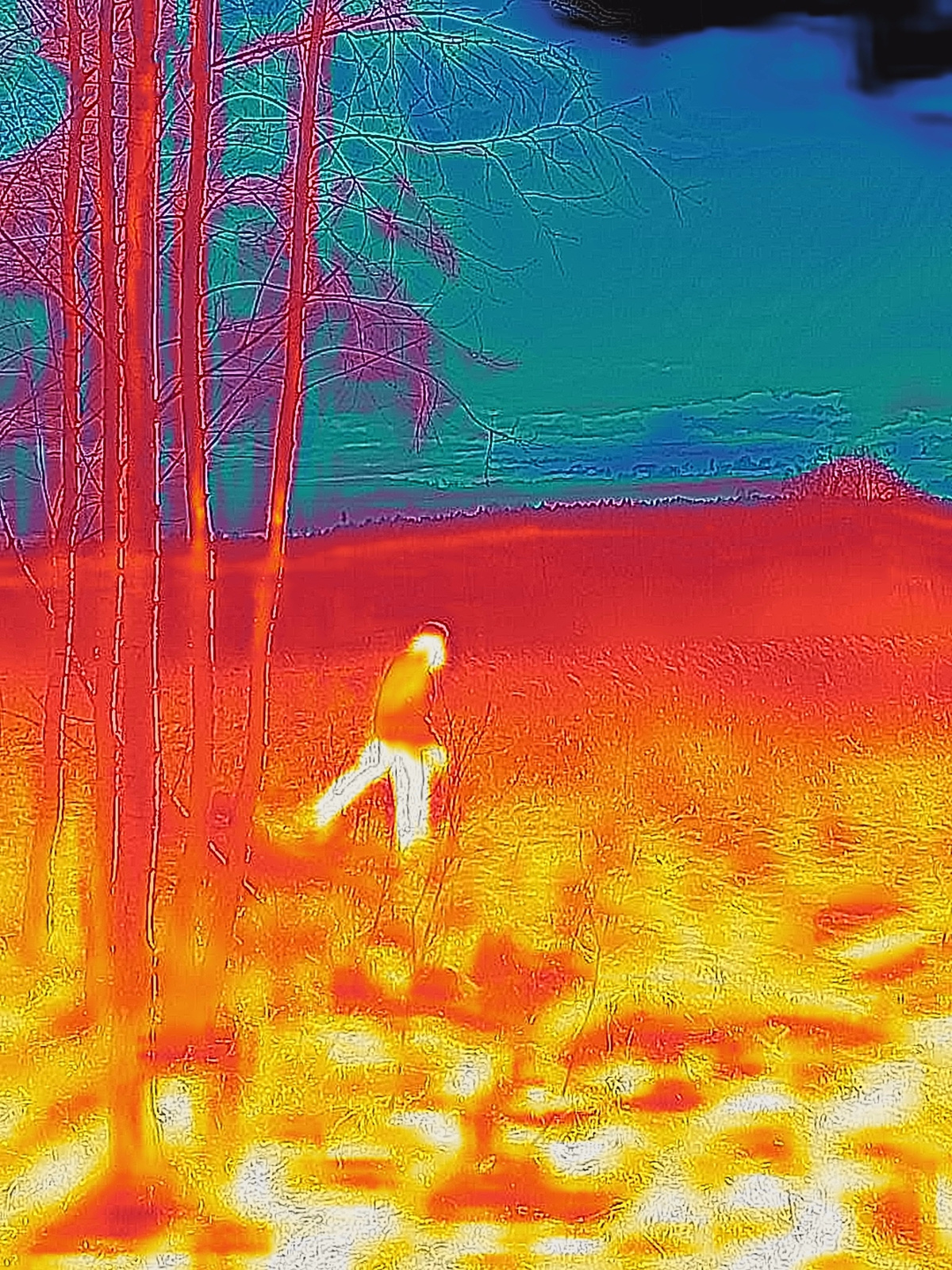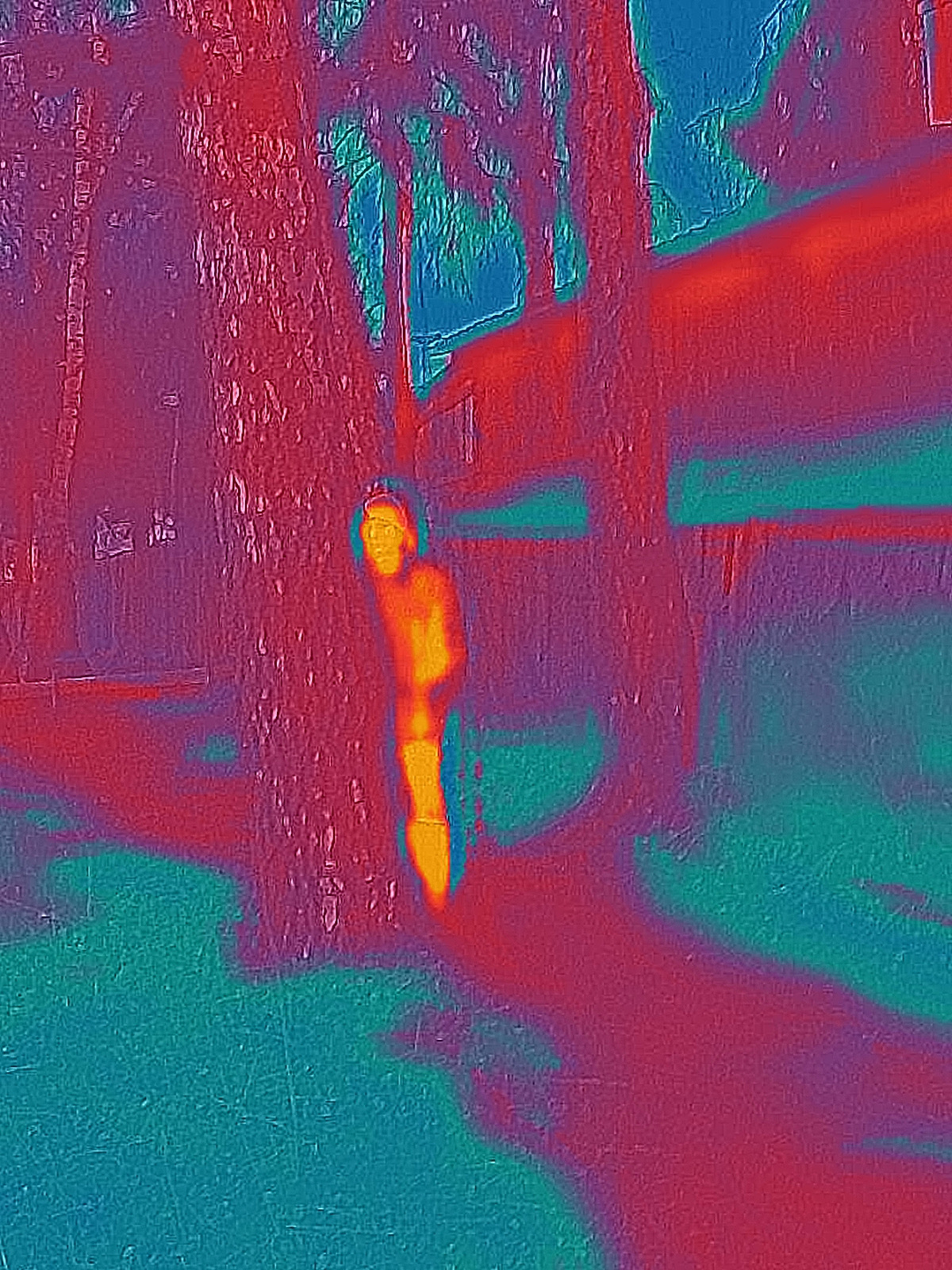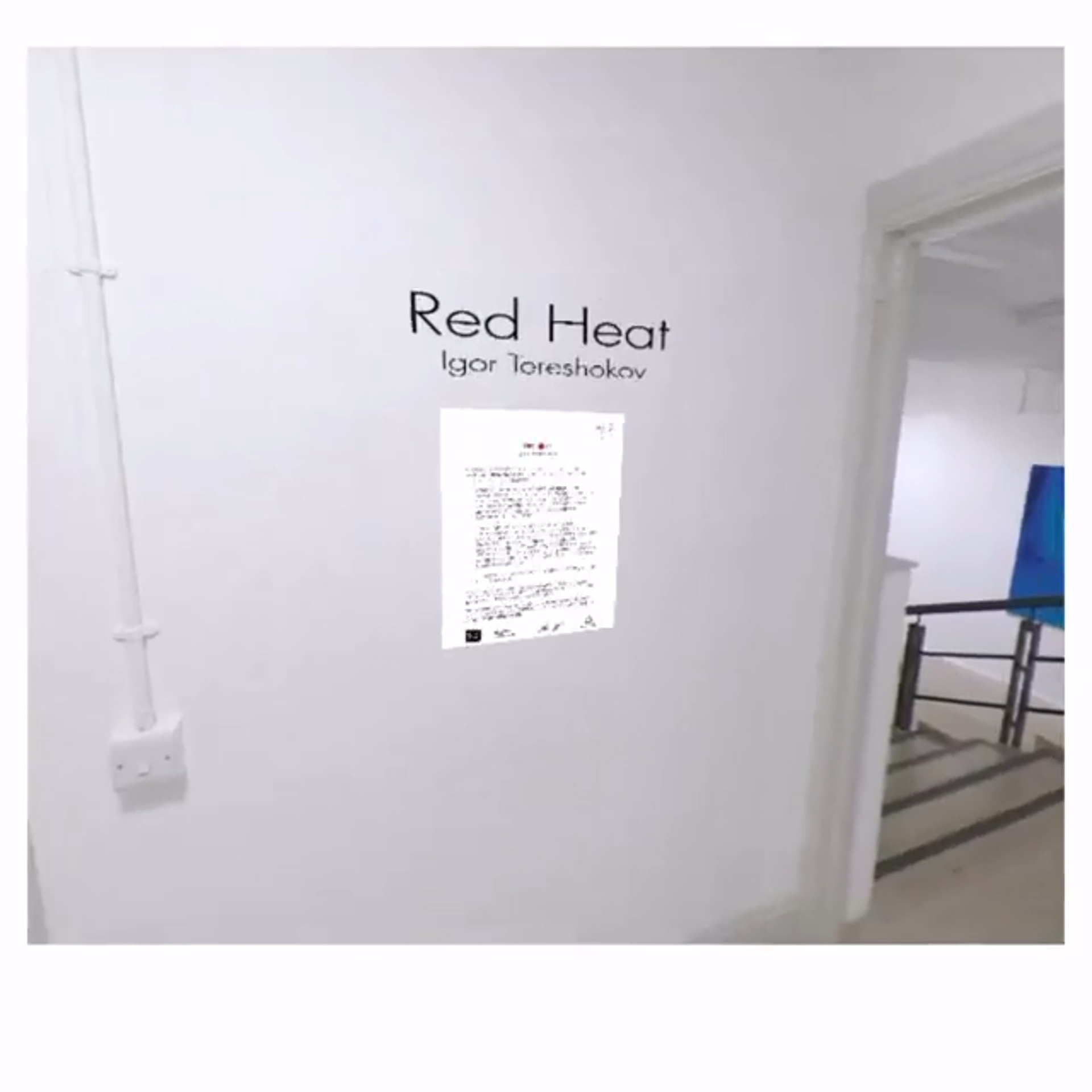Red Heat
Red Heat is a long-term photographic series that investigates themes of totalitarian control, political pressure, and the transformation of personal freedom under the rule of the modern Russian state. The project traces how surveillance technologies, instruments of repression, and the architecture of power infiltrate everyday life—shaping a new reality both inside and beyond Russia’s borders.
The series began in April 2020 in the Moscow region, at the height of the COVID-19 lockdown. The city had come to a standstill—deserted streets, police patrols, and restricted movement formed the backdrop for the first thermal camera documentation. Through infrared imagery capturing the heat signatures of bodies, Red Heat visually recorded not only the absence of people but also the growing presence of state control. Under the guise of fighting a pandemic, the Russian government rapidly implemented a digital infrastructure of surveillance: facial recognition cameras installed on streets and doorways, QR-code movement passes, automatic fine systems—all of which laid the foundation for what can be called a Digital Gulag.
Crucially, many of the restrictions introduced in 2020 remain in place even as of 2025. Bans on public gatherings, protests, and demonstrations are still enforced. Authorities continue to issue fines under COVID-era regulations, particularly during spontaneous protests or anti-war rallies. What began as a public health measure has since hardened into a permanent regime of constraint and punishment.
The second major phase of the project took place in January 2021 during the nationwide protests following the arrest of opposition leader Alexei Navalny. Red Heat expanded its focus, documenting mass detentions, police violence, and the atmosphere of fear and resistance in Russia’s public spaces. The series presents a stark visual narrative of how the state’s grip on bodies and minds has become a strategic tool of governance.
In 2022, with the launch of Russia’s full-scale invasion of Ukraine, the project extended its geographic and political scope. New photographs were taken in various regions, including Kazakhstan—a key destination for young Russian men fleeing conscription. Russia and Kazakhstan share the world’s longest continuous land border, and during the partial mobilization, Kazakhstan became a symbol of escape from military service. Red Heat captures this moment of mass exodus, embedding it in a broader narrative of repression and flight.
The series also documents the wave of arson attacks targeting military enlistment offices across Russia. These acts—often involving Molotov cocktails—were desperate attempts to destroy draft records and obstruct mobilization. These images serve as testimony to grassroots resistance, defiance, and the extreme measures people were willing to take.
Another strand of the project addresses the Kremlin’s use of energy blackmail as a geopolitical weapon. Through symbolic imagery and visual metaphor, Red Heat explores how gas exports became a bargaining chip, and how European nations gradually moved to reject Russian energy supplies despite the economic risks involved.
The project’s title, Red Heat, is an homage to the late 1980s Hollywood film of the same name, which portrayed a Soviet police state through the lens of Cold War tropes. In this context, the name functions as a cultural reference point that connects past and present—showing how the mechanisms of authoritarian control have evolved and adapted in the digital age.
Visually and conceptually, Red Heat argues that the COVID-19 pandemic of 2020 laid the structural groundwork for the later military escalation. The emergency measures implemented during the pandemic enabled the Russian state to build and normalize a sophisticated system of surveillance and repression—one that would soon be used for political persecution, mobilization, and warfare.
Red Heat is not only a chronicle of recent events but also an indictment. It is a document of a time in which digital control, censorship, manipulation, and fear became everyday realities. It is an observation of how the machinery of power uses crisis to entrench itself—and a reminder of how quickly the extraordinary becomes the new normal, especially when silence and obedience are mistaken for safety.
“The Red Heat is hanging over ordinary people and isn’t going to disappear anytime soon”
Publication in The Calvert Journal
Exhibited in 2022 during Biel/Bienne Festival in Switzerland:
bielerfototage.ch/de/Ausstellungen/red-heat/
Virtual exhibition
Elysium gallery


